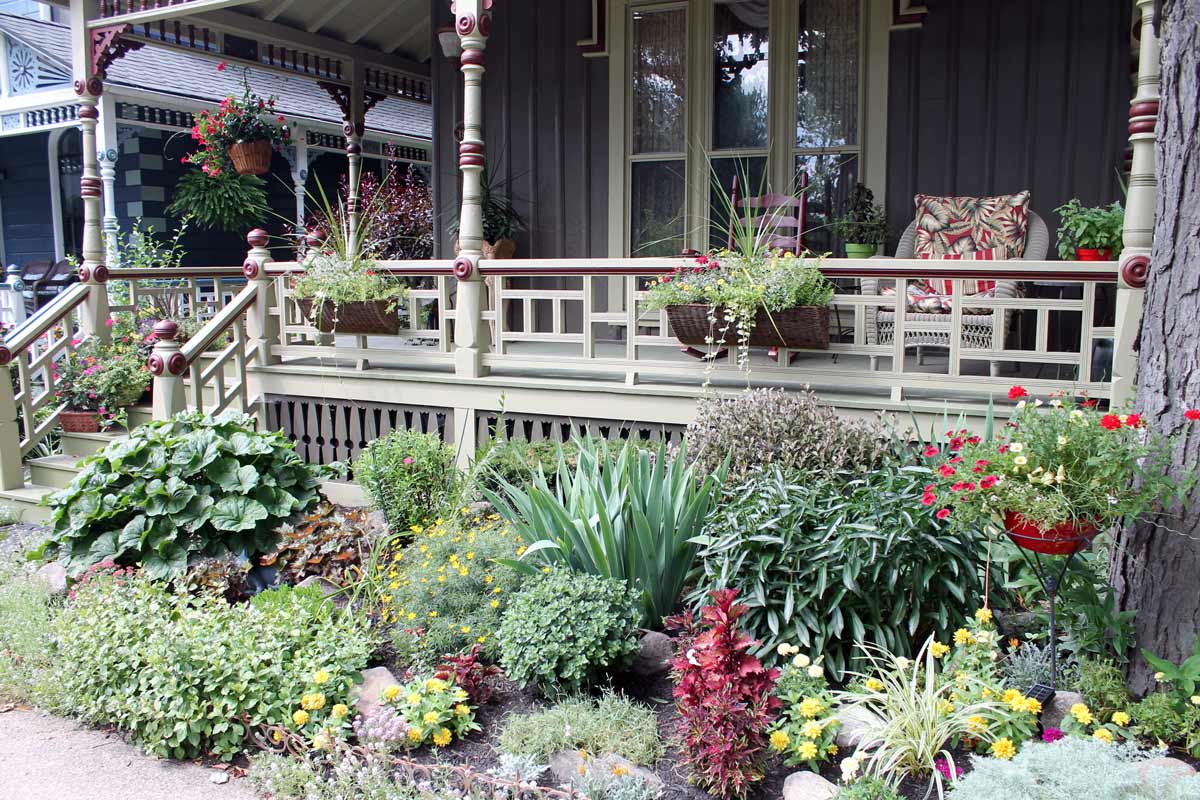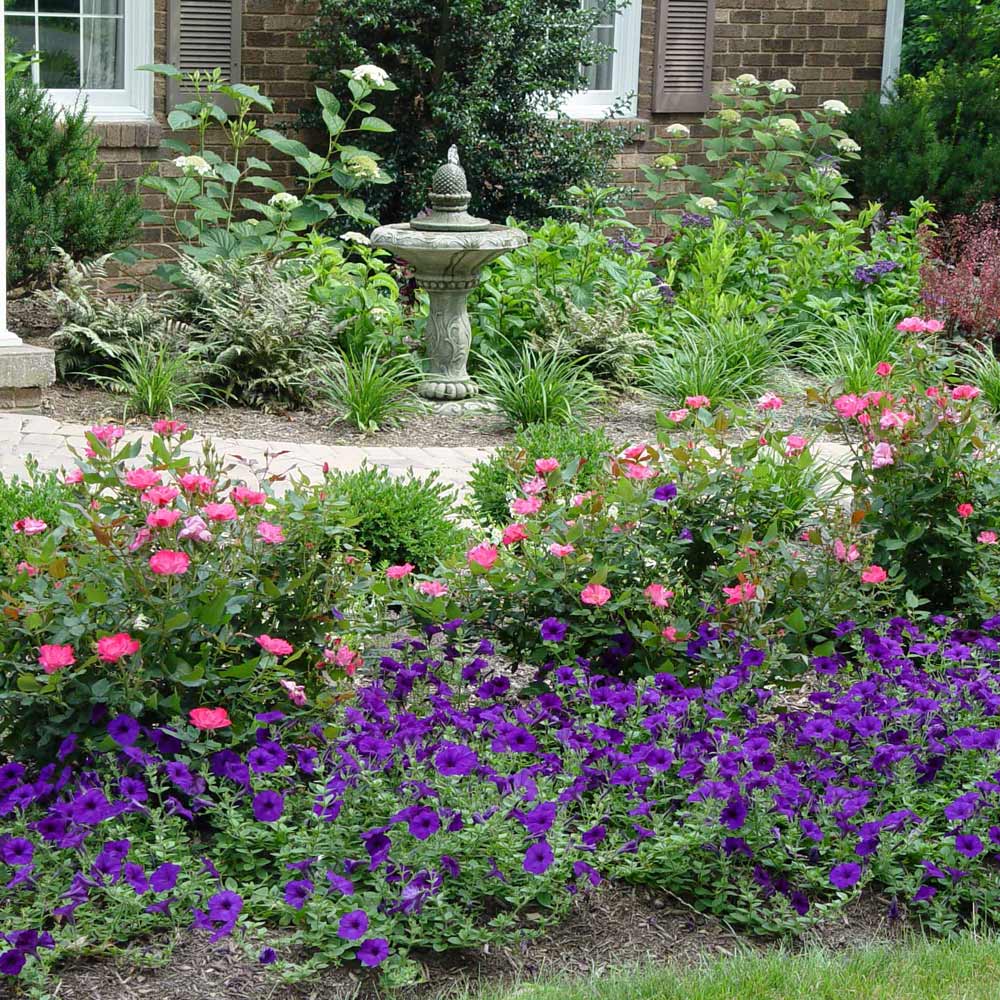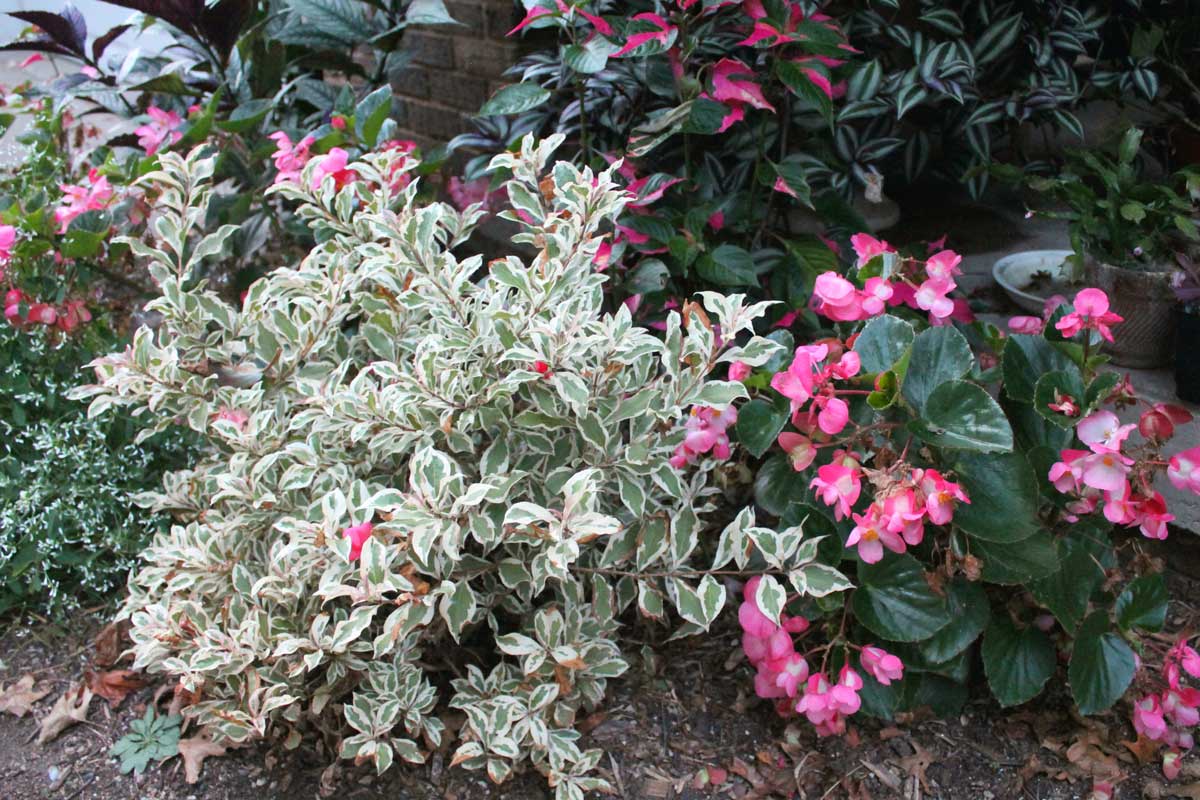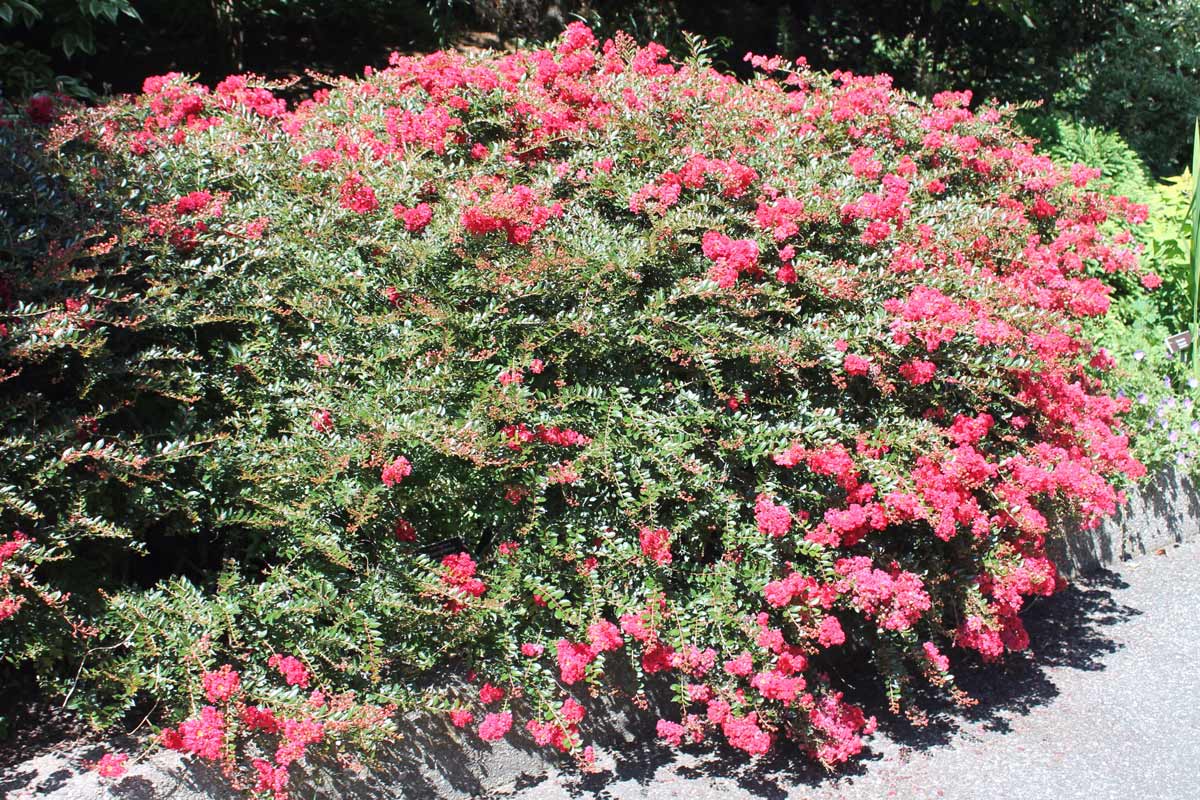Three Easy-to-Grow Flowering Shrubs
Consider these beautiful spring flowering shrubs to add seasonal color and texture to your landscape.
If recent online searches are any indication, a lot of gardeners are looking to revamp their front yards this year.
“We saw home gardeners and decorators sprucing up their backyard spaces during COVID-19 to provide that outdoor sanctuary,” says Diane Blazek, executive director of the National Garden Bureau. “Now the front yard is getting the love... There are a lot of searches for compact plants to coincide with that search.”
Compact plants in general have been on the upswing in recent years because yards are trending smaller and gardeners are looking to trim the job of constant trimming.
The good news is that growers and breeders are ahead of the curve and already producing a range of down-sized versions of popular landscape shrubs that make ideal front-and-center choices.

Small beds along the front of a front porch call for plants that are going to stay compact. Photo by George Weigel
Compact or “dwarf” shrubs, as they’re sometimes known, are winter-hardy, woody plants that are either naturally small or are varieties that have been bred to grow slower and smaller than their species dictates.
Some are evergreen, while others flower in the growing season and drop their leaves in fall.
Some grow in neat mounds, some have low, arching habits.
Some have traditional green foliage, some have interesting shades of blue, burgundy, or gold to add long-lasting leaf color to the flower show.

These compact shrub roses make a colorful low hedge along a front walkway. George Weigel
Besides the benefit of being maintenance-savers, compact shrubs are useful for adding texture and form. They make a good framework or “skeleton” alongside the bulbs, perennial flowers, annual flowers, and flower pots that are the main color workhorses in a front garden.
Among the front-yard spots where compact shrubs make sense:
Limited spaces like those call for smaller plants, not bulky bushes or hulking hollies that will quickly overpower the space and lead to unnecessary trimming – or worse yet, plant removals.
When shopping for shrubs, start by reading plant tags to determine what the grower considers to be the “mature” height and width of the plant (usually five to 10 years after planting). Even though plants typically surpass those label estimates over time, it’ll give you an idea of comfortable maintenance sizes.
Two rules of thumb on spacing shrubs in the landscape:
Also pay attention to the site’s light. Know whether the exposure is full sun, mostly shade, or somewhere between, then select accordingly. Plant labels also spell out shrubs’ light preferences.
Shrubs planted around your house and walkways make a big impact to your front of the house aesthetic, improving your home's curb appeal by adding color, texture and structure.
Some of the shrubs you’ll find these days with low-maintenance down-sized options include:
Most garden centers have nursery sections devoted to “dwarf conifers,” which are some of the smallest needled evergreens. Examples are the three-foot-round Mr. Bowling Ball® globe arborvitae, the rounded cryptomerias Dragon Prince™ and ‘Globosa Nana’ (four feet), and a dwarf Norway spruce called ‘Little Gem’ that stays under two feet tall.

Weigela My Monet® is a super-compact flowering shrub with variegated foliage. George Weigel

Crape myrtles are available in compact rounded forms, such as this three-by-four-foot Cherry Dazzle®. George Weigel